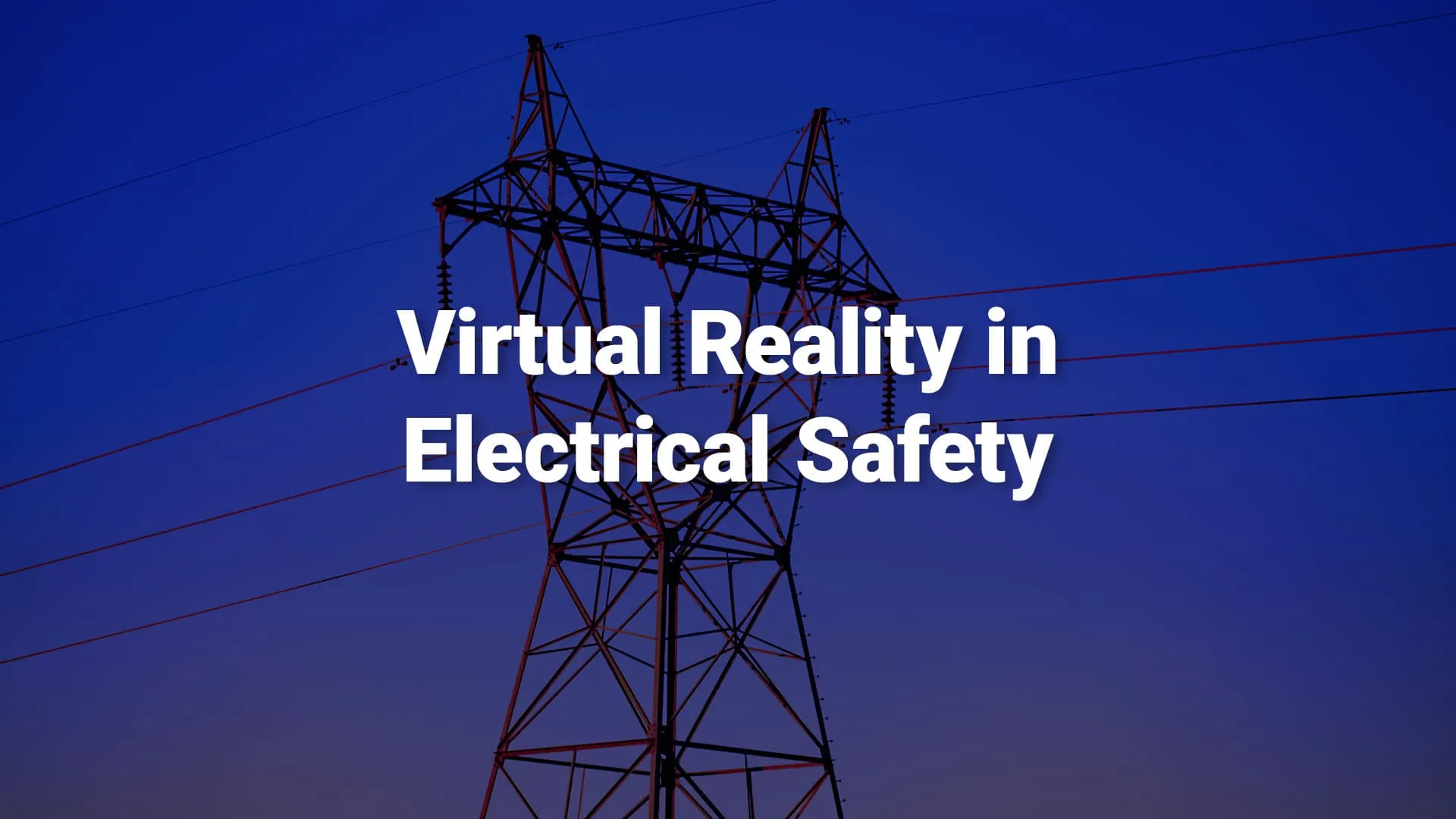As we become more digital and interconnected, virtual reality (VR) technology is transforming a range of sectors, including education. And, while we’ve covered how VR is impacting education generally, one (unexpected) domain where it’s making waves is electrical safety education.
Long considered a dry subject full of textbook learning, VR is infusing electrical safety education with an immersive, engaging, and, most importantly, safe method of teaching. By allowing learners to virtually navigate potential hazards and manage electrical scenarios, VR is breaking new ground, supporting education as it moves from a mere theory-based approach to a holistic experiential one.
The Role of Virtual Reality in Education
VR has already made its mark in various educational fields, from medicine and engineering to history and art. In the classroom, VR can transport students to different locations, allowing them to explore the depths of the ocean, visit ancient civilizations, or witness historical events firsthand.
Often used as a supplement to traditional teaching methods, virtual reality enables students to engage with the subject matter on a deeper level, fostering curiosity and enhancing their understanding of complex concepts. It breaks down the barriers of time and space, providing unique learning experiences that were previously unimaginable – especially when it comes to electrical safety education.
The Intersection of Virtual Reality and Electrical Safety Education
The traditional ways of teaching electrical safety, though effective, lacked the immersive interaction needed to impress upon learners the urgency and seriousness of potential electrical hazards. With the advent of VR, electrical safety education is no longer about rote memorization from manuals, but about practical application and real-time learning. Now, learners can experience and understand the repercussions of safety protocol breaches, all from the safety of a controlled environment.
The Need for Enhanced Electrical Safety Education
Did you know that electrical incidents are one of the deadliest forms of injuries in the workplace? According to the Electrical Safety Foundation International (ESFI), there were 1,560 workplace electrical injuries in 2018, 9% of which were fatal and due to electric shock.
Most electrical accidents are preventable, but a single mistake can be fatal. And traditional videos and textbooks are not enough to prepare workers; they simply don’t fully capture the real-life dangers and the sense of urgency associated with electrical safety.
But by incorporating virtual reality into electrical safety education, trainers can bridge this gap and create an immersive learning experience that elicits emotional responses similar to what individuals would experience in actual risky situations. This heightened sense of realism can help learners internalize safety protocols and develop critical thinking skills necessary for identifying and mitigating electrical hazards.
With VR, electricians-in-training can practice their skills in a virtual environment. They can learn how to handle electrical equipment, troubleshoot issues, and perform maintenance tasks, all in a safe and controlled setting. This hands-on experience allows them to gain confidence and proficiency before working with real electrical systems.
And because VR caters to different learning styles and preferences, it makes electrical safety education more equitable and accessible. Some individuals learn best through hands-on experiences, while others prefer visual or auditory learning; VR accommodates this. Through personalized and adaptive learning, it caters to individual needs and maximizes comprehension across the board.
Case Studies of Virtual Reality in Electrical Safety Training
Several case studies have demonstrated the effectiveness of virtual reality in electrical safety training. One such study conducted by DMI, NRECA, and Jo-Carroll Energy involved using VR technology to familiarize workers with electrical substations.
This program enabled staff to virtually visit a substation, move around in that environment, and practice interacting with its controls – all without leaving the office. Convenient as it was, the results also showed a significant improvement in workers’ ability to recognize hazards and make correct decisions when compared to those who underwent traditional training methods.
In another case study, Intel and HTC Vive joined forces to create a virtual Electrical Safety Recertification course. The VR course presented trainees with cutting-edge VR content, clear learning outcomes, risk management scenarios, and controlled 360 feedback. As a result of the training:
- Intel recorded a 5-Year ROI of 300%
- The trainees enjoyed VR training, with 94% wanting more virtual training
- They reduced their total training cost of ownership
- They increased their trainee retention and motivation
Ultimately, these case studies show that VR electrical safety training is not only effective but also saves costs and improves worker productivity. By ensuring safe behaviors, identifying at-risk conditions, and demonstrating safe work practices through an effectively designed VR training program, you have the recipe for sustained success in hand.
The Benefits of Using Virtual Reality in Electrical Safety Education
Using VR in electrical safety is not just a matter of embracing digital trends or making learning more exciting. Rather, it’s about leveraging a tool that can profoundly enhance comprehension, retention, and practical application of electrical safety principles.
This supplement transcends the traditional boundaries of textbooks and classrooms, opening up a realm of immersive and interactive learning experiences. From risk-free experimentation to an immersive understanding of complex systems, VR offers a few benefits that can revolutionize electrical safety education.
Increased Engagement and Retention
One of the key advantages of virtual reality in education is its ability to engage learners in ways that traditional methods cannot. VR environments provide a level of interactivity and immersion that captures learners’ attention and keeps them actively involved in the learning process.
In fact, a study by PwC found that VR can improve information retention, with learners recalling information more accurately and for longer periods compared to traditional instructional methods. This enhanced engagement and retention can lead to a higher level of safety consciousness among workers, thereby reducing the likelihood of accidents and promoting a safer work environment.
Safe and Controlled Learning Environment
VR offers a safe and controlled learning environment, which is especially crucial when it comes to electrical safety. In VR simulations, learners can make mistakes without facing real-life consequences, allowing them to learn from their errors and refine their decision-making skills in a risk-free setting.
The best part? Trainers can customize VR environments to replicate specific scenarios or challenges that workers should be ready for on a daily basis. With this method, students develop the necessary skills and confidence to navigate these situations, so they’re prepared to handle real-world electrical safety challenges effectively when they do happen.
Challenges and Solutions in Implementing Virtual Reality in Electrical Safety Education
While VR’s benefits are impressive and transformative, it’s equally important to address the hurdles that folks might face in implementing this technology. Like any novel teaching tool, VR comes with its own set of challenges – from technology and financial barriers to overcoming implementation challenges.
Technological and Financial Barriers
While virtual reality technology carries massive potential, implementing it in educational settings can present certain challenges when it comes to the cost of equipment and software, especially for schools or organizations with limited budgets.
Keep in mind: as technology continues to evolve, costs are expected to decrease, making VR more accessible to educational institutions. Plus, partnerships between technology companies and educational institutions can help offset financial barriers by providing access to hardware and software at reduced costs.
Overcoming Implementation Challenges
Implementing virtual reality in electrical safety education requires careful planning and consideration. The learning objectives must align with the capabilities of available VR technology, so it’s crucial to create well-designed VR experiences that effectively convey the desired educational content and engage learners.
That may also require adjustments in instructional methodologies and assessment strategies. But providing adequate technical support and training for instructors and learners can ease the transition and ensure a successful implementation.
Using VR in Your Electrical Safety Education Program
As we navigate through this digital age, the fusion of technology and education continues to create powerful tools for learning. VR in electrical safety education is just one such transformative instrument that promises an immersive, interactive, and engaging learning experience.
Although it’s not without its challenges and limitations, the potential of virtual reality technology in electrical safety education is promising. Plus, innovative companies like ArborXR are addressing the challenges of using XR in electrical safety by providing dedicated XR MDM solutions. ArborXR can manage all your VR devices, remotely install content, and control what users see and do so you can do what you do best.
Want to explore the use of VR in your electrical safety education program? Give us a shout or get started today.

